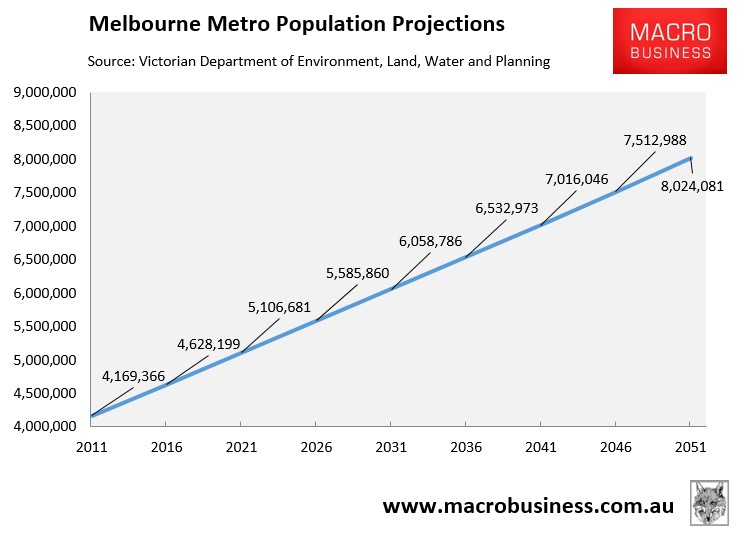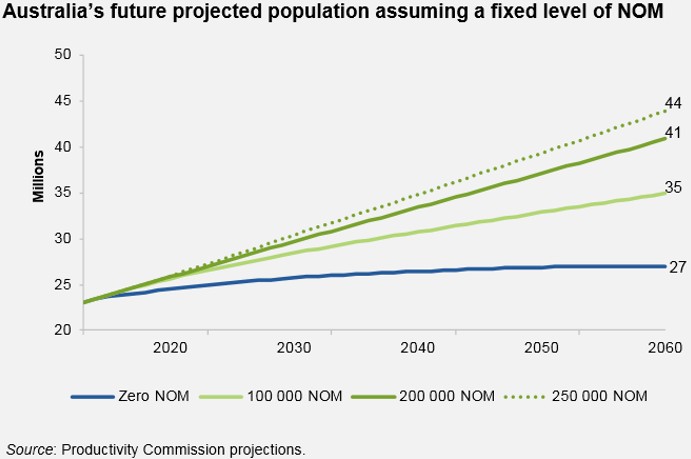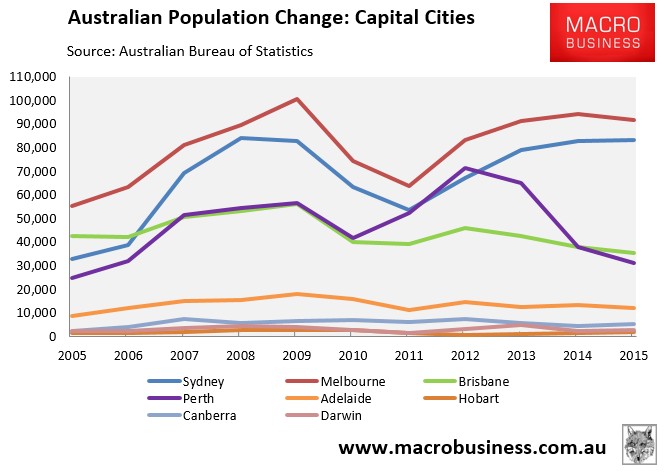Infrastructure Victoria is the latest to warn that Melbourne is facing eternal gridlock as its population soars way beyond the capacity of the road system. From The Age:
Melbourne is set to become so choked by cars in coming decades that the average speed during the morning peak will drop to just 31 kilometres an hour – even with billions of dollars of planned road and rail upgrades.
In a depressing analysis of the challenges facing Australia’s fastest growing city, Infrastructure Victoria bluntly warns it will be impossible for Melbourne to build its way out of congestion…
As it is, about 30 per cent of car trips today happen on congested roads during the morning peak.
But by 2046, the number of daily trips made on the transport network is expected to soar by 74 per cent.
The report, suggesting state and federal governments could be forced to take some tough political decisions in the near future, found congestion is already costing about $4.6 billion a year. But this is expected to more than double to $10.2 billion by 2030.
It said within 15 years, delays caused by traffic snarls will be costing every Melburnian an average of $1700 a year more than under a scenario where traffic could move more freely…
Infrastructure Victoria chief executive Michel Masson said a new road pricing regime was badly needed to better manage demand…
He said it would be impossible for Melbourne to build its way out of the problem, given the rate of population growth.
Infrastructure Victoria’s report has coincided with another from business consultants Ernst and Young, which warns that Melbourne’s tram system also risks grinding to a halt. Also from The Age:
Slow tram speeds caused by increased congestion on the roads is a growing problem – trams travel at average speeds of 15.7 km/h now, down from 17.2 km/h in 2012, the report says.
It also notes that Melbourne needs better tram stop design and traffic treatment at major stops, to ease overcrowding and safety problems…
Melbourne needs more trams, with greater separation so they don’t get stuck in traffic so much…
“The forecast population growth and changing employment patterns in Melbourne will change transport demand, placing considerable strain on our public transport system, as people become less reliant on car ownership and increasingly look to public transport to meet their evolving travel needs,” the report predicts.
This site has long supported road pricing, since it discourages drivers who make relatively low value trips. Those who aren’t prepared to pay will make the trip at another time, shift to public transport, or decide it’s not worth making at all.
That said, road pricing treats the symptom of congestion and not its true cause: Melbourne’s rampant population growth caused by Australia’s high immigration program.
In the decade to June 2015, Melbourne added an incredible 832,000 people – the largest population increase out of Australia’s capital cities (see next chart).
Moreover, official projections have Melbourne’s population increasing by around 1,850 people per week (97,000 people per year) for the next 35 years!

There is simply no way that road pricing could possibly mitigate such growth and prevent congestion and overall livability from falling.
As the Productivity Commission illustrated in its recent Migrant Intake Australia report, immigration policy is a defacto population policy. If our policy makers choose to persist with a high immigration program then Australia’s population will hit 40 million or more by 2060, with most of this added population flowing to Melbourne and Sydney. However, if we cut immigration back significantly, Australia’s population will be much smaller, as it will be in our major cities (see next chart).

Indeed, the Productivity Commission estimated a 13 million difference in Australia’s population size in 2060 between persisting with historical rates of immigration (40 million) and zero net overseas migration (27 million).
Given the strains across our big cities, Blind Freddy can see that the optimal thing to do is to reduce Australia’s net overseas migration to much lower levels than the circa 200,000 currently. This would unquestionably relieve pressures on congestion, housing, and overall living standards, while forestalling the need for costly retrofitting of infrastructure to accommodate more people.
It is a policy choice how big and crowded Australia’s cities become. We must exercise this choice by cutting immigration significantly and aiming for a smaller, more sustainable and more liveable Australia.


